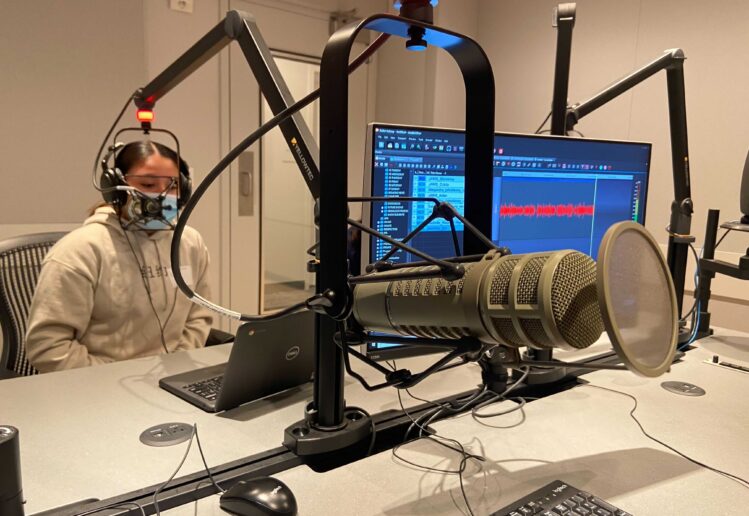“Hi, my name is Maya. I go to school in the Richmond and I love badminton!”
The “North Star” of our education department is to “elevate diverse youth voices.” As a diverse team, we operationalize this goal through a number of different strategies. My job as the manager of online learning is focused on supporting teachers as the central agents supporting young people in developing their civic voices. But not always. Sometimes I get to work with kids directly.
These past couple of months, we’ve been hosting local high schoolers in our headquarters as part of the KQED “Youth Takeover,” a project to get more student voices on the air via our various channels at KQED. My role has been to accompany teens into one of our professional recording booths to capture their voices for whatever audio pieces they want to create.
It’s really fun pretending to be an audio engineer / producer for an hour! You get to press buttons, slide faders, and adjust mics. I feel a little bit like Timbaland.
For the teens, it’s typically their first time in a professional recording session. They are always very nervous the first time they hear themselves through the headphones. I like to explain why they sound so “weird” through the headphones and how that is something you get used to after a while.
After the first awkward take, we talk about how it felt, and what they wished they did better. I give them some tips and let their peers offer any advice they have. Then they do it again… and again… and again.
Facilitating these short media making experiences with youth is a powerful reminder to me why media literacy is so important. For most of them, this is the first time an adult they don’t know has listened attentively to their narrative, helped them refine and develop it, and then sent them home with their audio files to continue to improve on their own. I get to tell a teen that their story matters.
For many of these students, the next time they hear a podcast or a radio story, they will have a bit more knowledge about the process of how that piece was produced. They can picture a bit more clearly what the host, the audio engineer, the guest, and the post-production editor are doing to bring that piece of media to the public.
A few are curious about what working as a media professional is like. How do I become an audio engineer? Could I just start my own podcast? What do you major in to get to work at KQED? A light turns on.
All of this is in service to our larger goal of promoting a more equitable and inclusive society. Because if young people like these, whether they are a BIPOC teen from East Oakland or a nonbinary student from Fremont, they deserve a place in the larger civic conversation on the issues that matter to them. And this is one small way of giving them the tools, access, and habits that will get them there.
I’m delighted to be reading Cassidy Puckett’s new book Redefining Geek: Bias and the Five Hidden Habits of Tech-Savvy Teens (2022), which could not be more relevant. Cassidy looks at the hidden habits that tech-oriented teens demonstrate, and how we as a society can be supporting those habits for all young people, no matter their background or identities. Part of her research is drawn her observations of the “I Dig Tanzania” project that I led when I was at Global Kids back in 2008.

I look forward to writing more about Cassidy’s findings soon, once I’ve finished the book.
I love that my day-to-day work is focused on supporting teachers around the country in delivering high quality media literacy instruction. Our online courses are being used by chemistry teachers in LA, home school educators in the midwest, librarians in the northeast, and history teachers in the deep south. We’re providing a necessary service that no other organization in the country is doing… for free.
But it’s nice to know that I’m able to help a local teen record her first audio essay about graduating during the pandemic and a sophomore share his passion for skateboarding. I love seeing them go from anxious to excited as their pieces take more shape. And I get to hear them grow more confident in telling their stories with each new take.
As an educator, I have long been torn between my love of working directly with young people and my desire to support systemic change in education. I”m so fortunate that I get to do some of both here at KQED, where we have deep roots in our local community, but we also have strong connections to the larger system of PBS stations around the country.
“Okay, Ernesto, I think you’ve got one more take in you. Recording in three… two… one…. GO…”
